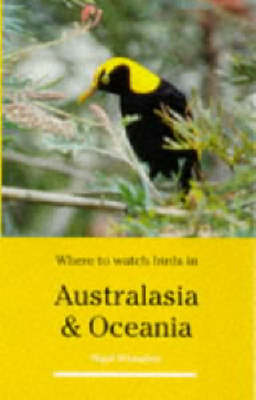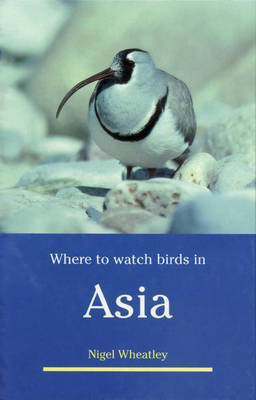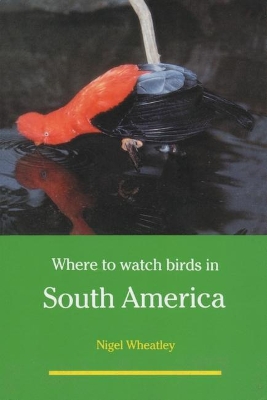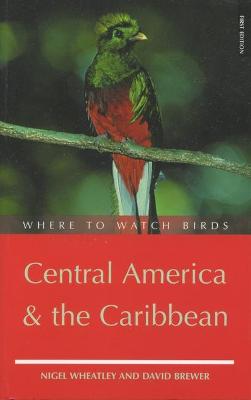Where to Watch Birds
6 total works
One of a series of guides devoted to birdwatching, this book contains site accounts, plans, maps, lists of birds in the regions and advice on planning bird-watching trips. It deals with over 200 sites in detail, and mentions many others. Each country is covered alphabetically, including archipelagos and isolated islands off the African mainland, for example, the Azores. Bird lists are included under the headings "Endemics", "Specialities", "Others" and also "Other Wildlife", if relevant. Access details are given, often with detailed site maps. The emphasis of the book is "bird finding", that is, where to go for the "best" species.
The fourth guide in a series covering birdwatching sites in the great continents. It describes almost 150 sites in detail and many more in passing. It's primary aim is to help birders make the most of their trips, detailing the endemic and special" birds to be found at each site as well as the more common and "usual" species. Countries are treated alphabetically, with all the practical information required to make the most of a trip and to avoid wasted time. Included are detailed maps and line drawings."
Bringing together for the first time all of the birding sites in Asia, this handy guide advises new and frequent visitors to the continent on where to go for the best birdwatching. From Turkey to Thailand and India to Indonesia, the book contains the latest birding information and deals with over 250 sites in detail and many more in passing. It directs the reader quickly to sites containing the birds he or she wants to see and tells which countries support the best cross-sections. Strategic information concerning when to go, how many sites to visit, how to get there, and how much time to spend is presented in a straightforward, easy-to-use format. Over one hundred maps and fifty line drawings enliven the text. Following a chapter on how to use the book, there is an introduction to the continent and its birds. The book then focuses on the countries, archipelagos, and islands. General introductions to each country are followed by site details, which include bird lists, a list of other wildlife present, if applicable, and the latest information on where to look for the best birds.
Over 250 major sites are treated in this book, and many more in passing from Iceland across Europe through Georgia to Ussuriland in southeast Russia. Countries, archipelagos and islands are treated alphabetically, the introduction to each being accompanied by a map showing major routes and the distribution of sites. Each site account lists the birds to be seen and how and where to find them, particularly the specialities, and there is also information on other wildlife and tips on finding accommodation. There is a general introduction to the region, a list of useful addresses to aid in planning and researching a trip as well as a site index and, most importantly, a species index which will enable readers to pinpoint the birds they most want to see.
A unique field guide and reference, Where to Watch Birds in South America is designed to help the avid birder and the general wildlife enthusiast organize eventful journeys throughout the richest continent for birds, where the species number over three thousand.
This book covers more than two hundred of the best sites for birdwatching, and includes the archipelagos of Trinidad and Tobago, the Galapagos and Falkland Islands, the Netherland Antilles, and part of Antarctica. The reader will find details of every species that is endemic to particular countries, and will learn where and when best to see such birds as the scarlet ibis, Andean condor, harpy eagle, sunbittern, macaw, toucan, jacamar, antbird, and cotinga. The text is enhanced by nearly one hundred maps and fifty line drawings. There are even hints as to where species not seen for decades may be rediscovered.
This guide begins with an introduction to the continent and its birds then deals with particular countries and archipelagos. The site details include bird lists, a list of other wildlife present, and the latest advice on where to look for birds. For the traveler, there is information on transport, accommodations, safety, and health, and answers to various strategic questions: Which countries support the most species? How many sites must be visited to see most of them? How long does this take? When is the best time to go?
Whether a first-time visitor to South America or a seasoned traveler there, the reader will find this guide immensely useful in making the most out of the trip.
This book covers more than two hundred of the best sites for birdwatching, and includes the archipelagos of Trinidad and Tobago, the Galapagos and Falkland Islands, the Netherland Antilles, and part of Antarctica. The reader will find details of every species that is endemic to particular countries, and will learn where and when best to see such birds as the scarlet ibis, Andean condor, harpy eagle, sunbittern, macaw, toucan, jacamar, antbird, and cotinga. The text is enhanced by nearly one hundred maps and fifty line drawings. There are even hints as to where species not seen for decades may be rediscovered.
This guide begins with an introduction to the continent and its birds then deals with particular countries and archipelagos. The site details include bird lists, a list of other wildlife present, and the latest advice on where to look for birds. For the traveler, there is information on transport, accommodations, safety, and health, and answers to various strategic questions: Which countries support the most species? How many sites must be visited to see most of them? How long does this take? When is the best time to go?
Whether a first-time visitor to South America or a seasoned traveler there, the reader will find this guide immensely useful in making the most out of the trip.
Where to Watch Birds in Central America and the Caribbean
by Nigel Wheatley and David Brewer
Published 31 January 2002
This guide covers the best birding sites in Central America and the Caribbean. In a format familiar to readers of this very popular series, each site is considered in terms of 'Habitat', 'Timing', 'Access' and 'Calendar', allowing birders to plan excursions to maximise the chances of getting the best out of each site and each region. The book includes detailed maps of the larger sites, plus general maps of the regions covered, and it is illustrated with line drawings.





